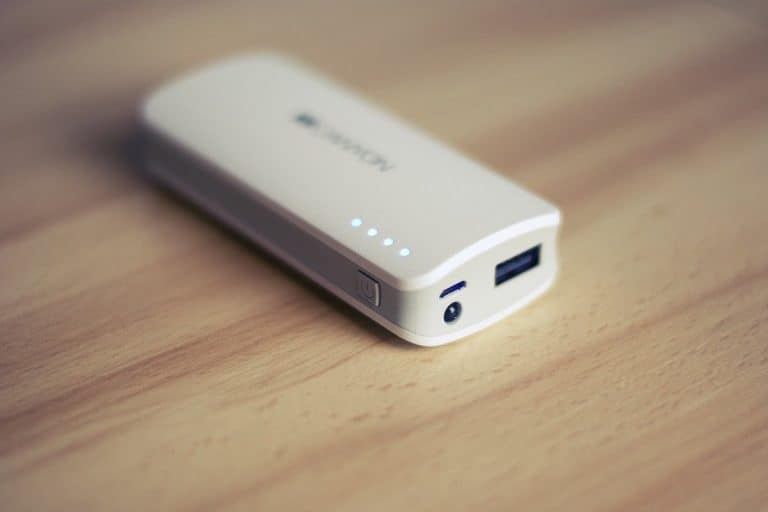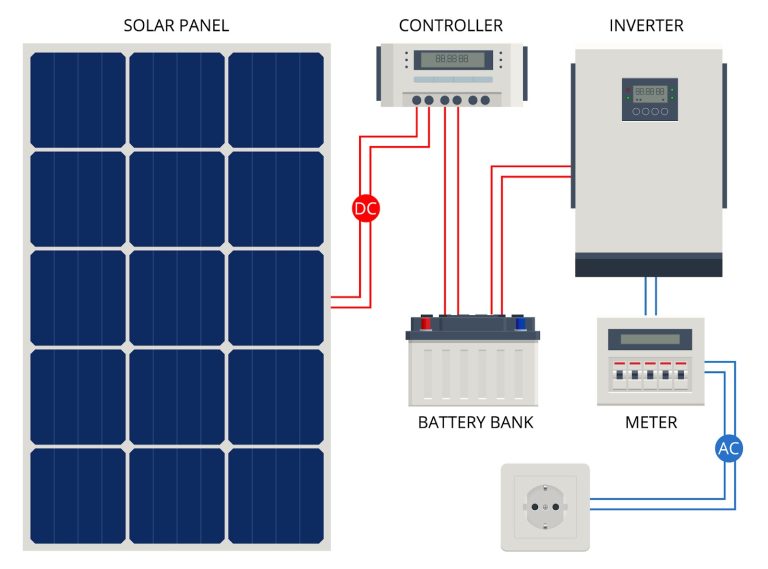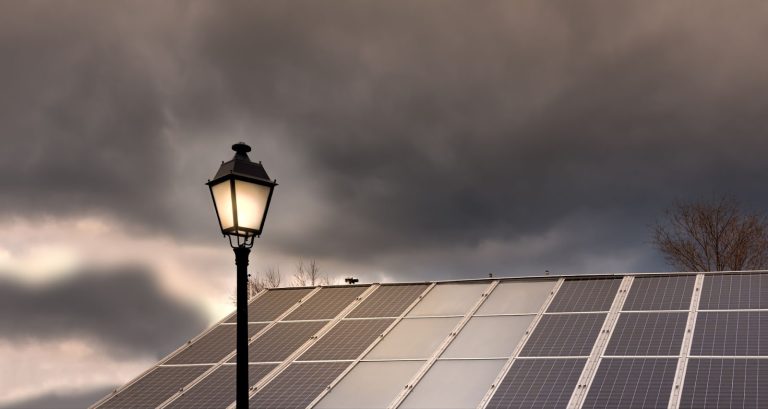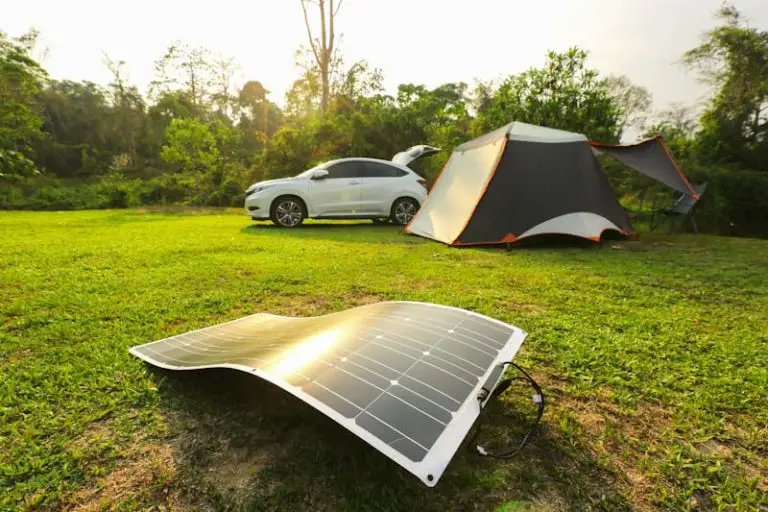How Do I Know When My Solar Batteries Are Fully Charged?
If you are an avid camper or want to live off the grid, you would know that having a reliable power source just makes life more enjoyable. Solar batteries are a great choice for environment-conscious individuals, and they’re not outrageously expensive.
Still, once you have a solar battery set up and charging, how do you know when it is full?
There are a number of options available if one wants to check the charge level of a battery within a solar energy system. Charge controllers and inverters can be used if they are part of the system. If neither a charge controller nor an inverter is present, a voltmeter or multimeter that is not fixed into the system can also be used.
This article will take a closer look at the batteries in a solar energy system and the methods we use to check their charge.
How Long Does It Take to Charge a Solar Battery?
Various factors influence the time it takes for solar panels to charge a battery. Of course, the weather and all things pertaining to it are some of the most significant factors. The amount of sunlight that can be harnessed can change day by day and definitely changes from season to season.
In ideal conditions, it should take between 6 and 7 hours to charge a 12-volt battery. Poor conditions can increase this time, while more and/or bigger panels, for example, can decrease it.
Checking the Charge of my Battery
Once you choose the perfect battery for your solar setup, either at home or while camping, being able to check the charge of your battery becomes important.
There are several options to choose from when you want to do this. The charge controller and inverter already part of the system are good options, and different meters can also be used.
Charge Controllers
The solar charge controller is responsible for the voltage that flows into the battery. When the battery needs to charge, it enters a bulk-charging phase where the volts go up to 14.4–14.6 volts and then absorbs the current provided.
When the battery has absorbed the majority of the charge it needs, the voltage goes down to a float level of 13.4–13.7 volts.
Quality charge controllers with a display screen will indicate the voltage being fed to the battery and, depending on that voltage, whether it is fully charged or not. If the battery has reached the float level, it will be full.
Many charge controllers without a screen will have a light display that will indicate whether it is in bulk, absorption, or float phase and, thus, it will also indicate when the battery is full.
Having a charge controller should keep the panels from overcharging the battery, but if you don’t have one connected to your system, checking the batteries’ charge becomes all the more important.
Inverters
If you are running AC-powered equipment from your battery, you will need an inverter to convert the battery’s DC power. The features of your inverter will determine how much information about the battery can be garnered from it.
Some inverters have a display screen that will provide information about the battery’s charge level, and you can quickly see if it is full or charging. Other inverters without a display screen might have a noise/light system warning you when the battery is running too low and/or indicating when the battery is either full or charging.
Meters
There are a number of meters that can be used to check your battery. The most common ones include a voltmeter, multimeter, or hydrometer.
Voltmeters
A voltmeter measures the electric potential between two points. To check a battery’s charge, you will have to connect a voltmeter to the black and red ports of the battery. The battery should be rested and not have been charged or delivering charge for a couple of hours to get an accurate reading.
The reading you get from a 12-volt battery should be between 11 and 13 volts. A reading of 13 volts would mean that the battery is fully charged, and 11 volts would mean the battery is basically dead. Voltmeters can be analog or have a digital display, but either type can give you an accurate reading.
Multimeters
Multimeters can measure the voltage as well as current, resistance, and a number of other things that could be important to know about your battery’s condition. It works and is connected to the battery in basically the same way that the voltmeter is.
To focus on the charge in the battery, you will need to know what type of meter you have. If you have an analog meter, you will need to check the voltage indicator, and if your meter has a digital display, then the voltage setting needs to be selected. The accuracy of digital meters most often surpasses that of analog meters.
Hydrometers
This meter can only be used for flooded lead-acid batteries as it needs to take measurements from the liquid within the battery.
The battery can also only be measured in this manner once it has gone through a cycle of charge and discharge after new water was added to the battery. The water requires this to effectively mix with the electrolyte in the battery as only then will it give an accurate reading of the electrolyte density.
The density is determined by the amount of sulfuric acid present in the liquid. The more sulfuric acid there is, the higher the density, which, in turn, means that the charge is also higher. You should be very cautious when measuring a lead-acid battery in this way and wear protective gear as sulfuric acid can be harmful.
The Ins and Outs of Solar Batteries
When you search for solar batteries on the internet, you will get numerous hits of items that look just like any other battery. Technically, there’s no such thing as a solar battery, rather you get normal lead-acid or lithium-ion batteries that are set up in a system with photovoltaic cells as their energy source, and these are then known as solar batteries.
The Solar Setup
People normally associate solar panels with dark-colored semiconducting material facing the sun as a method for harvesting solar energy.
There are various passive and active systems, though the dark, photovoltaic panels are indeed what is most often used. These cells can be integrated into the power grid or allow you to be independent of that grid (source).
A typical solar panel system would have the panels attached to a battery by way of a charge controller. The controller will protect the battery from both over- and undercharging.
An inverter can then be placed between the battery and the device it is meant to power in order to convert the direct current (DC) coming from the battery to alternating current (AC) that can be used to power devices and appliances (source).
Not every day is sunny, and a solar panel system can be supported by other power sources to ensure that maximum energy is generated even on cloudy days. Wind turbines, for example, can be added to the system should conditions be favorable for it.
Battery Options in a Solar System
There are a number of different batteries to choose from when installing a solar panel system. Each comes with its own pros and cons, and the one you select will depend on your wants and needs.
Lead-acid batteries
These are generally the more affordable option and can usually withstand regular discharging.
You can choose between a flooded or sealed lead-acid battery. The flooded battery requires maintenance more often but lasts longer. The sealed battery has a shorter lifespan and is more expensive, but it requires no maintenance and won’t leak.
Deep-cycle batteries
Some batteries deliver a lot of current for a short time. This is not helpful for a solar panel system, and, for this reason, deep-cycle batteries are recommended. They provide slightly less current for a longer period of time and are designed to discharge most of their capacity on a regular basis (source).
Lithium-Ion batteries
The most expensive batteries are the lithium-ions. This is a newer technology and also the most effective. They require no maintenance and are lighter, smaller, have a longer lifespan, and produce less heat.
Final Thoughts
Choosing the right battery and checking its charge is an important part of the maintenance of a solar panel system as you want to ensure that your battery stays at peak performance for as long as possible.
Getting accurate charge readings and ensuring you don’t over- or undercharge your battery is just one element of prolonging your battery’s life.
The simplest way of knowing whether your solar batteries are fully charged or not is to use your charge controller or inverter to check the battery’s voltage. They are probably already installed as part of the system and can give you the readings you need.
Alternatively, you can also use a voltmeter, multimeter, or hydrometer to get the necessary voltage readings.







